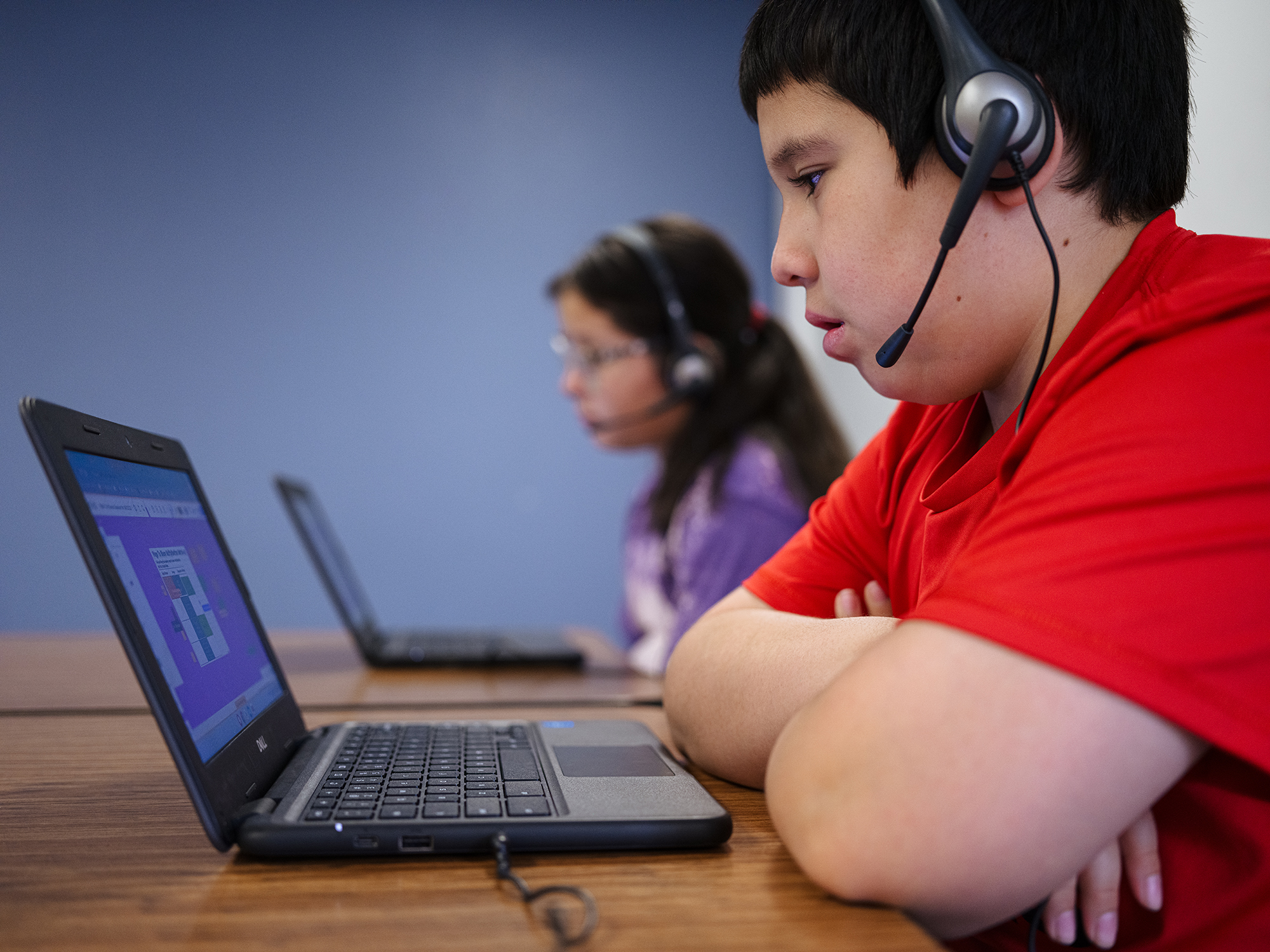Across the 2024–2025 school year, Chiefs for Change convened a dynamic Community of Practice (CoP) that brought together district leaders and educators to explore how artificial intelligence (AI) can elevate high-quality instructional materials (HQIM) in public education. In partnership with CourseMojo—a platform integrating generative AI with curriculum-aligned tools—this initiative focused on improving secondary literacy, specifically in sixth-grade classrooms.
From the outset, the CoP embraced a guiding principle: AI is not here to replace teachers, but to empower them. When thoughtfully integrated, AI supports educators in providing real-time feedback, differentiating instruction, and building stronger connections with students. This is particularly vital in middle school literacy, where reading and writing become more complex and foundational for future success.
Facilitated by Dr. Sharon Contreras, chief in residence at Chiefs for Change, the CoP fostered a collaborative environment for districts to examine both the promise and challenges of AI-powered instruction. Quarterly meetings provided space for in-depth dialogue, strategy sharing, and collective reflection. District leaders consistently highlighted a key opportunity: leveraging AI to reduce teacher workload while enhancing instructional precision.
Tools like CourseMojo enabled educators to quickly identify learning gaps, address misconceptions, and deliver timely scaffolding—all while staying true to high-quality instructional materials.
As Valerie from Ector County ISD put it:
“AI gave our teachers the gift of time. With built-in guardrails and a smart dashboard, they could focus on teaching—not just tracking.”
The focus on secondary literacy addressed a critical need. Middle school often receives less attention than early grades, yet it’s where achievement gaps can widen. In Aldine ISD, AI became a catalyst for student writing and analytical thinking.
“AI helps our teachers generate scaffolding questions that push students deeper. It’s not replacing instruction—it’s enriching it,” said Michelle from Aldine ISD.
Teachers noticed students taking more ownership of their learning:
“One of our students started asking the AI for writing feedback before turning in assignments. That kind of ownership? That’s growth,” shared Tracy, also from Aldine.
Sumner County Schools showed how sustained support—through SMART goal-setting, classroom observations, and ongoing coaching—made a difference.
“Our teachers appreciated the ongoing coaching and collaborative planning. It made integrating AI feel like a shared journey, not just another initiative,” reflected a Sumner County Schools leader.
The equity impact was clear across districts with a curated curriculum for emergent bilingual students and students with disabilities.
“For our emergent bilingual and low-income students, having AI support in real time was a game-changer. It’s like giving every student a second set of eyes and ears,” explained Valerie from Ector County ISD.
Jacqueline from Aldine ISD saw how AI made literacy instruction more personal and engaging, especially for students with special needs:
“Middle schoolers are capable of deep analysis when we equip them with the right tools. AI helped our students connect ideas and refine their thinking in ways we hadn’t seen before.”
John, a district leader at Hamilton County Schools, summed up the dual goals:
“Our goal is simple: enhance student learning and streamline staff workload. AI helps us do both without compromising on rigor or relationships.”
This seven-month initiative was more than a pilot—it was the start of a movement. Districts formed AI committees to ensure ethical use, invested in robust professional development, and prioritized student equity at every step.
“What I valued most was the opportunity to collaborate across districts. We’re not solving this in isolation—we’re building something together,” said Michelle from Aldine ISD.
CourseMojo responded to district feedback with meaningful updates, such as real-time translation, improved class setup, and a “pause” feature to help teachers transition smoothly between small-group and whole-class instruction.
“We’re not just layering AI on top of literacy—we’re using it to integrate reading and writing in ways that meet students where they are,” added Cannon, an instructional leader.
As the formal sessions of the Community of Practice conclude, Chiefs for Change and CourseMojo are equipping participants with step-by-step implementation tools and a new resource hub. Districts will continue to expand their pilots, support teachers, and build on the lessons and strategies developed together.
Above all, this initiative reinforces a powerful message: when AI is used with care and clarity, it becomes a tool for equity, engagement, and excellence. By placing secondary literacy at the center—and integrating reading and writing with intelligent supports—students are set on a path to thrive. The future of education is not a choice between technology and teachers. It’s about leveraging the best tools to empower the educators who know their students best, ensuring every learner has the opportunity to succeed.
